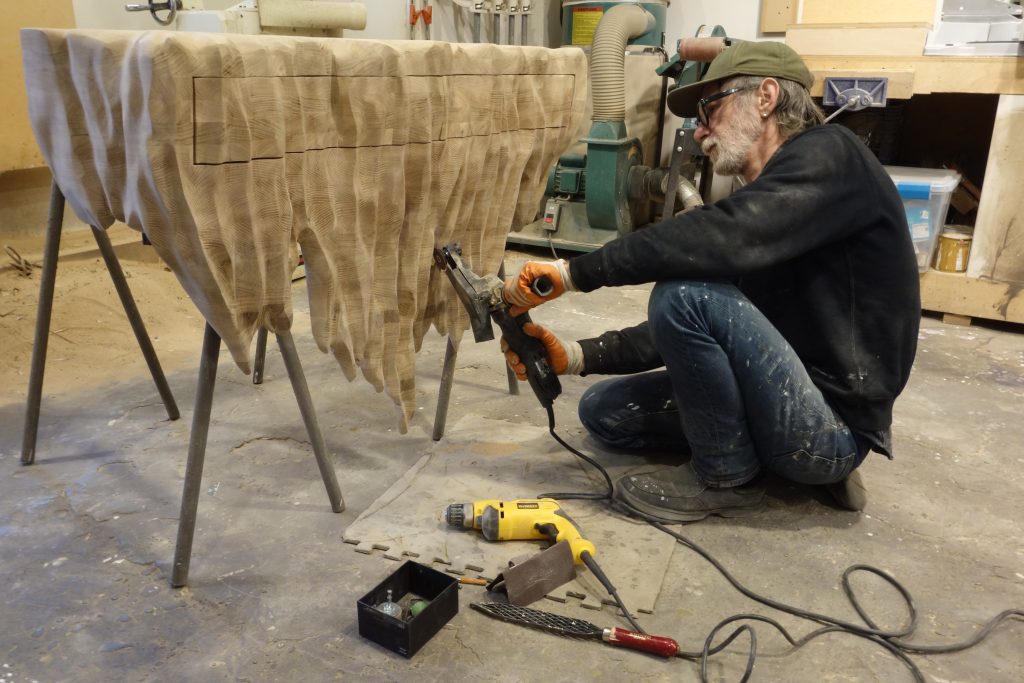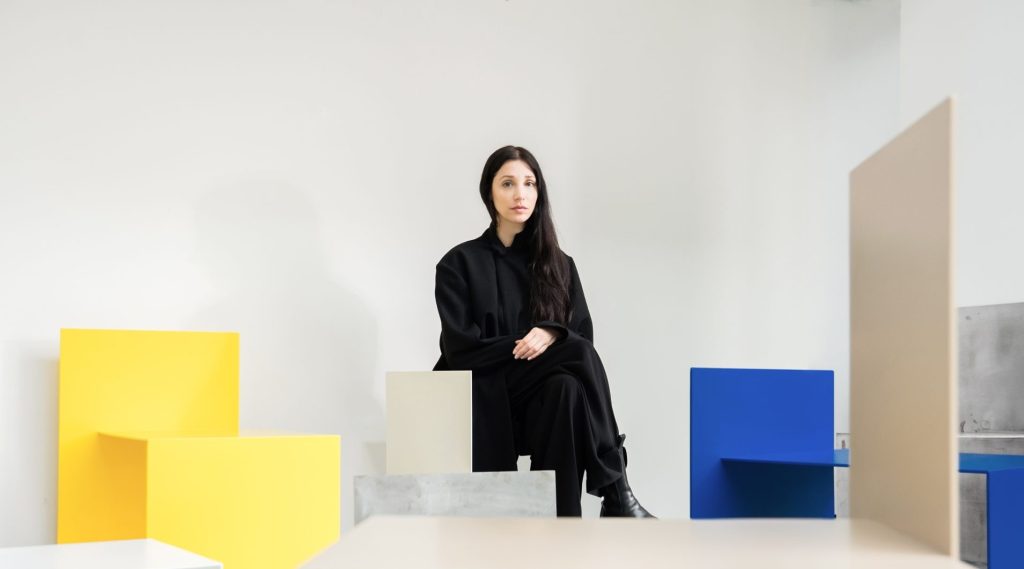Profiles: Josephine Andredottir & Emilie Bobek. Artsign
“Today there are no rules on how to use objects. We are in a time where it all floats together and the borders disappear.”
-Josephine Andredottir
Think back to your most recent encounter with contemporary art or design. Was it in a museum? A white-cube gallery space? What objects were there? Were they paintings? Were they sculptures? Something else? Did they resemble something you have in your home? Were they alien objects? Or were they something familiar? Did they look man-made? Or something from nature? Were you allowed to touch these objects? Could you sit on them? Were they interactive? Did they have a purpose or a function? These are just some of the questions you could ask yourself to try and distinguish if an object is art or design. However, chances are you have already been told whether an object is art or design before being able to contemplate this for yourself.
As a revolt against this dogmatic hierarchy and classifications within the worlds of art and design, designer Josephine Andredottir and artist Emilie Bobek have come together to create Artsign. Josephine and Emilie reflect a growing sentiment especially amongst young artist and designers questioning the separation of these two worlds and the over-categorization of creative objects in general. Josephine and Emilie explore this middle-ground through material and process innovation. By using their differences in perspective, working style and backgrounds to their advantage they are able to see the world of objects we exist in ripped of its pre-constructed context. This outlook allows them to create new meaning and find potential in often over-looked materials, for example transforming discarded mattress foam into unrecognizable geological bodies.
In their debut interview since joining forces, Josephine and Emilie share their vision for their new collaboration, how they got their start and how their works fit into the greater context of Nordic Design. Artsign will be featured in the upcoming exhibition NOVI – IVXX curated by Pil Bredahl.


Background
How did you two first meet?
Emilie: in 2016 – I remember meeting Josephine at a meeting about the cut downs of all the creative educations that was taking place at the school- The Royal Danish Design School. I was only here for an exchange from Gerrit Rietveld Academy, Nederlands, but heard about this and wanted to support the students. Josephine sat in a chair next to me, she was speaking very directly and had a good energy. She started to talk to me as if I belonged to the school. I didn’t know how to tell her that I was from another education, so I didn’t. Later I found out she was in my exchange class.
Josephine: My first meeting with Emilie was not at that meeting but at the studio area, I saw her right away tall like me, but with freckles. I always had something with people that have freckles, they have some sort of mildness, it’s strange, I always feel they are trustworthy and reliable. Already after a few conversations I knew that we should work together. She talked in visuals and images like me and two weeks later we talked a lot about the future when Emilie got back from the Netherlands. We planned to work and cross our two disciplines – art and design.
Emilie: I think we were in a way seeing our self in each other.
What are your educational backgrounds?
Josephine:
Designer
Educated at – The Royal Danish Academy of Fine Arts, School of Design.
BA – In Industrial Design & Ceramic form.
MA – In Furniture & Object
Emilie:
Arts
Sculpture Artist, specialized in ceramic
Educated at Gerrit Rietveld Academy, Amsterdam, Holland and now based in Copenhagen, Denmark
How long have you been working together?
J: A year – since Emilie came back to Denmark in 2018
How are you using your differences in your backgrounds to your advantage?
J: Emilie thinks a lot about the message, the story and the form where I think of form, function, materials, and details. Emilie as an artist is more free-thinking and is not bound by rules, whether it can hold or how it can stand or hang, therefore it becomes more abstract, dreamy and magical, which is very liberating in a process. I can gather it as a whole, make it more concrete and lower it again by getting a function and durability to it as an object. To explain it in short, it all starts with the sky’s the limit, but then needs a line to the ground.
What is one quality in your partner that you find inspiring or wish that you had?
E: I think Josephine is very good at making plans so things get done properly and to do things fully and not halfway. She has a good sense of details which I appreciate a lot. She has a way that she talks that catches people’s attention and makes people listen that I think is fantastic, but most of all I think it is inspiring the way she and I communicate together. We simply just follow each other’s thoughts and we can talk about work forever and it always inspires me.
J: With Emilie, everything is free, because of her background as an artist. There are no rules and everything is dissolved and borders are invisible. It makes me feel very free and makes everything possible. As a designer there are rules, form, and functionality as well as interesting or attractive aesthetics. I love to break with the traditional and I can do that with Emilie. Also, she is really good at communicating her thoughts, visions, and theories in writing.








Art vs. Design
Can you describe the difference between art and design in just one sentence?
E: There are many differences, but our focus is what is alike. We have been inspired by where the two disciplines meet and how that can look. Most of all this is about breaking the borders that hold creativity in a traditional manner.
J: The difference can be that art needs to be preserved where the design needs to be used, art has more value and is an investment where design has an expiring date and worn and used up.
Often functionality is cited as the main difference between art and design, is this an acceptable way to differentiate the two?
E: That is true, that is one thing that differentiates them, but there is so much more. For me, it is also the meaning of it and that’s why we started this project together. Can the meaning of the arts intertwine with the meaning of design?
What role do materials play in this categorization?
E: A great role, we both are obsessed with materials. The choice might be different from art and design, but we always wanted to disrupt these things and we have talked several times about bringing clay into bigger ideas such as walls, rooms, and furniture also because of our backgrounds in the field.
J: We like to mix and work in many different materials to find new methods and compositions in existing materials as well as self-created materials. Compared to what we make of products we have to think of the materials’ surface and durability. For example: Can a stool be sat on, can a table be used and touched many times and can you clean it? If not, there has to be a good reason for the object to be made.
How do you think our daily objects would be different in a world where there was no division between art and design?
E: Maybe not different at all, depends on the maker. I come to think of Marcel Duchamp and his ready-mades. He just took a product and put it in the gallery and said it was art, but outside the gallery, it was still design. That means it was the place of the object, that decided whether it was art or design. I find that super interesting, but it also means that they don’t necessarily have to look very different to be one and the same thing. We can in a way decide.
J: Exactly, today there are no rules on how to use objects. We are in a time where it all floats together and the borders disappear. We don’t necessarily need to use a vase for flowers, we can use it for pencils or other things. I can use my statue-sculpture as a rack if I will. The title of the objects does not decide the function.
How does your work challenge this division?
E: Actually our work can be used and placed in many different ways, it gives the placing of it a very important status and meaning. We want to invite more people to take part of this new way of experiencing objects as Artsigns (Art-Design) because it means to break down the rules of art and design and how they are seen as one of the things, only!
What artist and/or designers are inspiring to your work, or have you seen blurring this line in the past?
E: We have talked about this before, but it is hard to find one, but there are many who goes into it with curiosity in which we admire.


Nordic Design
Do you consider your work to have a strong connection to Nordic culture?
E & J: We are very Scandinavian, both of us Josephine is half Danish, half Icelandic, Emilie is Danish with Swedish roots, so our work will of course also be, inevitably. Artificial nature that is on display at Adorno takes its beginning from the Nordic landscape. All of the objects are made from modern artificial elements or material. Our main question and starting point has been if we can live in an artificial landscape without nature or if nature can be found in artificial materials. We have used mattress jesmonite and epoxy mainly due to the curiosity of what we could do with these products and materials.
What aspects of your work or work process to you see as inherently Nordic?
E & J: The raw and magnificent nature we have in the north and the tradition of using wood, but also color choice shines through in the objects. The new series of objects simulate stone, rocks, and moss, and is inspired by the Nordic nature.
Recently, in Nordic design there has been a call back to nature and in emulating our natural landscape through design, does your work address this in any way?
E & J: In this series of objects we call Artificial Nature, you can easily see the reflection of nature in it.
Design and art always come back to nature. One has said, “Nature does not need us, but we need nature.”






For more information on Artsign, view their designer page and follow their Instagram










